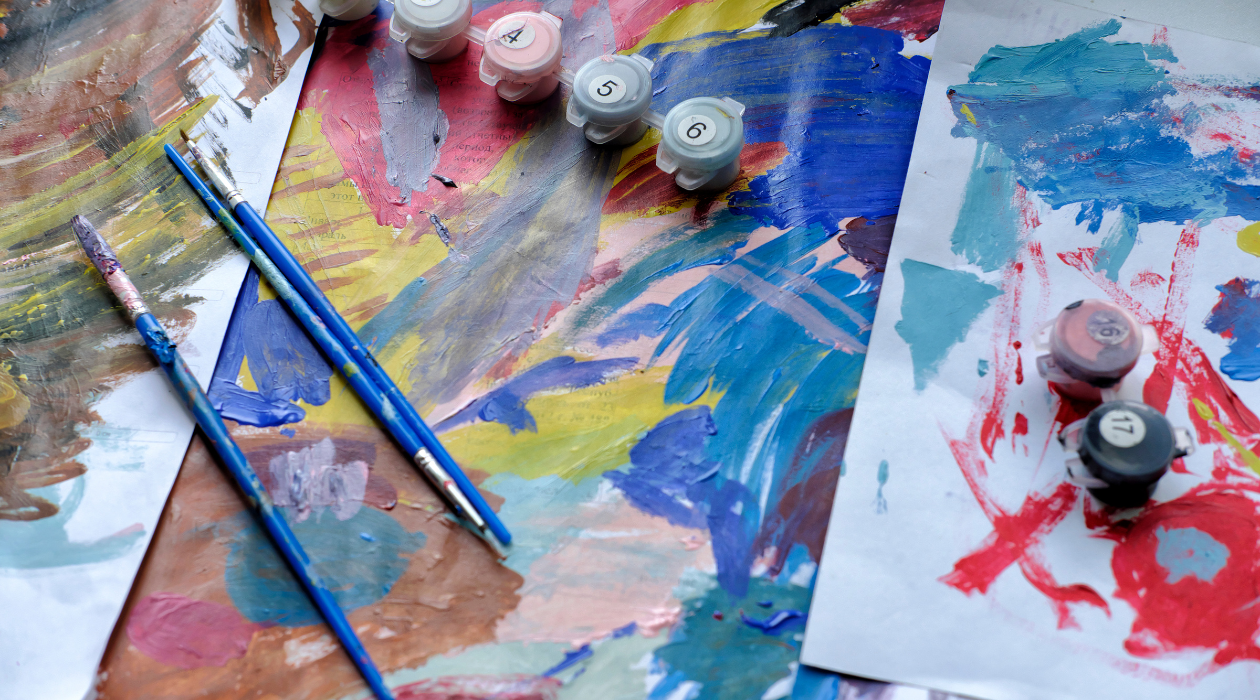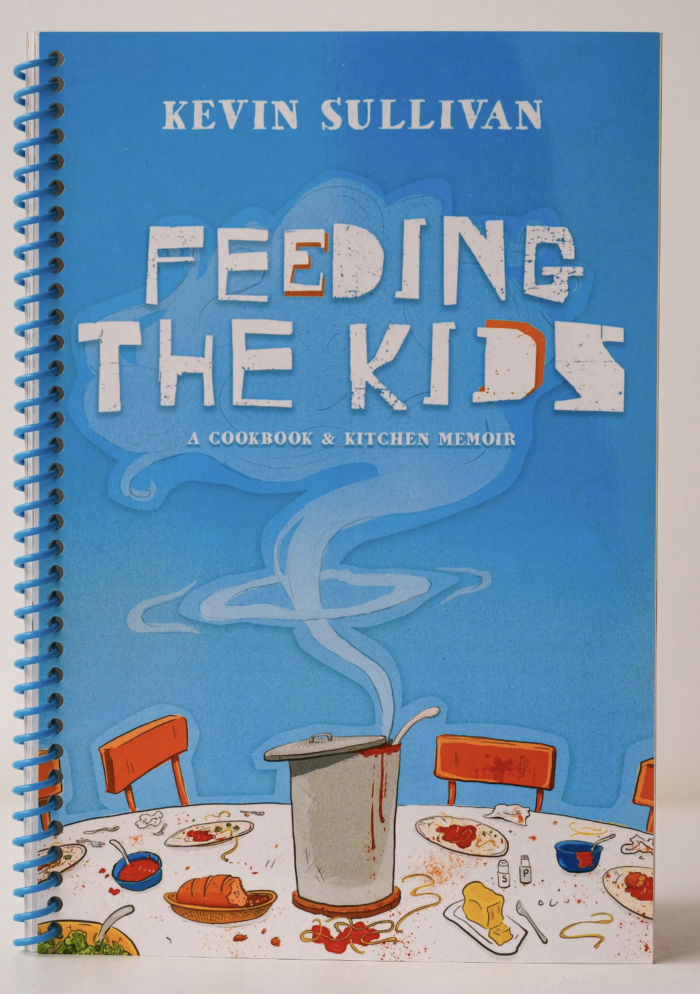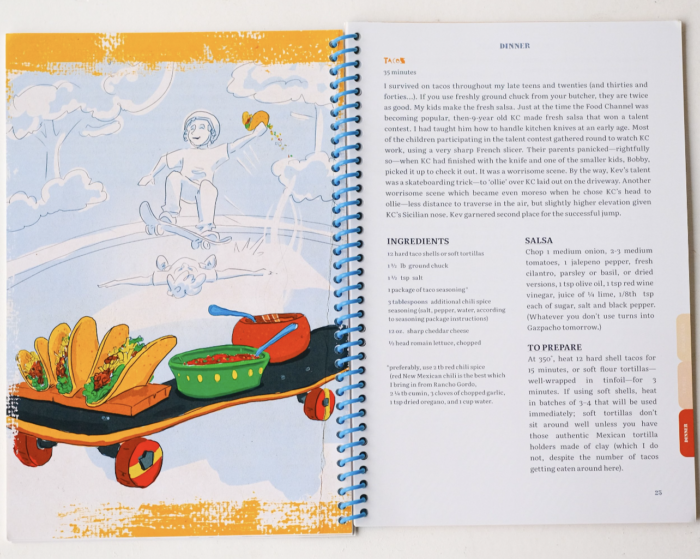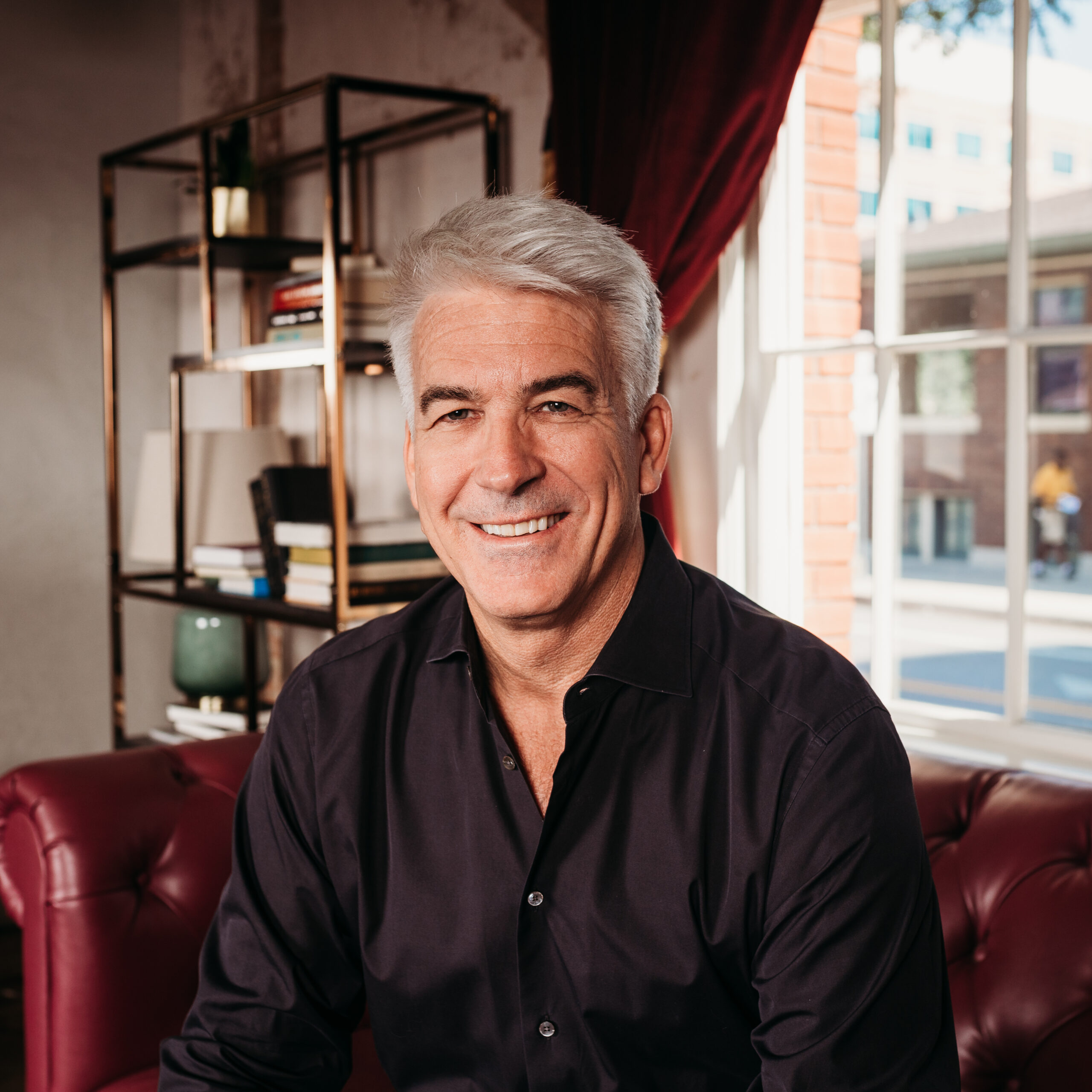Side Gig: Chad Bockes, Illustrator

[Header image credit: Canva]
This blog series delves into the creative work our people do when they’re ‘off the clock.’
Inside the TMA hallways you’ll find the typical agency titles: account executives, copywriters, strategists, and more. Outside of TMA, these same folks are accomplished photographers, artists, screenwriters, poets, musicians, and a plethora of other creative roles.
We recently sat down with Chad Bockes, Art Director to discuss how his side-gig as an illustrator has developed throughout his life, his role in designing a cookbook, and how it all intersects with his 9-5.
How did you get started as an illustrator?
Right out of college I started freelancing via the internet. I made a whole bunch of mediocre illustrations for books and one-off projects. I really wasn’t very good, but it was a great way to start out and start dealing with an array of clients.
Was this something you always knew you wanted to do/have a career in?
Yep! I’ve always doodled and drawn things. Since I can remember I was interested in arts and crafts. I think a lot of creative-minded people feel an innate drive to express themselves visually. It just takes time to figure out how to transform that drive into something that looks decent, and use it in modern living.
How did the cookbook come to be? Have you ever been a part of a project like this before?
I have a good friend named KC that started an art collective in college. He focuses largely on networking with artists and selling art. Throughout the start of the collective, I helped with their branding and commercial art. KC is familiar with my illustrations and some production knowledge, so when he needed someone to roll out a longer format book, I was a close and easy choice.
What was the idea behind the cookbook?
It is a “Cookbook and Kitchen Memoir.” So while there are definitely plenty of recipes, you also read relatable stories of figuring out how to feed a dynamic family. The stories are wholesome, funny, and filled with different anecdotes, all centered around the kitchen – the heart of the house.

What was the process like? Take us through it all.
First step was to read through the white paper to get a sense of tone. I settled on playful and chaotic illustrations, with a sense of rhythm throughout the book formatting. Normally, a cookbook has nice recipe photos to show how tasty your creation can be. But because this is filled with such funky and chaotic stories, we decided to have fun with the illustrations and concentrate on the family experiences. The illustrations started on paper, but refined with a loose process of digital coloring and adding texture.
We realized we’re not great authors or orators, so we hired an editor to help with the sense of pacing, and help distinguish different chapters or sub-sections. That helped decide which of two different styles of illustration were used on each page. (Full-page illustrations with color, or a smaller graphic illustration for notable recipes or anecdotes).
When we decided on all visuals and copy, we connected with a printing company to see what our options were for stock and binding. We were able to use a classic coil bind that matched our cover and reminded us of old cookbooks we grew up with. The last step was to make sure all our pages were mech’d and formatted correctly before sending out and checking proofs.

How would you describe your style?
Adaptable! Why, what do you need? Actually, if I’m illustrating something just for myself, I tend to create things that have a loose direction and show handwork, but are refined where it counts. I try to find a nostalgic childhood sense of fun.
Throughout my time working in commercial art, I like to think that I gained an ability to accommodate a variety of styles. When I started working, I thought maybe it was necessary to have a “style,” and that is probably true for many successful illustrators.
However, my experienced showed me it’s also useful to be able to accommodate a variety of needs, which opens more doors. For instance, I was able to work on the loose childlike style of illustrations in the cookbook while working on a more refined, definitive vector illustration for an indie-movie. Both very different styles that were made for very different purposes.
Where do you get inspiration from?
Anywhere really. I think all art, no matter how abstract or commercial, is based on observation followed by abstraction onto a medium. If you’re being observant and cognizant of the world around you, you’ll notice how you interact with it, and you’ll find ideas and thoughts coming at you from just about anywhere.
Does this ever intersect with your 9-5?
Yes, in both 9-5, and illustration work, I use a lot of the same tools. In each area I come across problems that need to be solved by learning new tools. Learning things in each area dramatically helps execution in the other.
Building off the above, how do you balance both your 9-5 and your side gig?
It can be really tough to carve out time. But like most things, it mostly seems daunting before you get rolling with it. When the ball does get rolling with side-work, it can be very rewarding (and even relaxing) to stretch more creative muscles outside of work. But sometimes everyone needs a break – I try not to do too much on top of work.
What are some of your favorite projects you’ve worked on?
This latest cookbook is probably my favorite and most proud illustration. Otherwise, many of my favorites are illustrations that I’ve just done for fun. They live with friends and family, or are still hiding in sketchbooks.
Where can we find your art? How can we support?
You can visit me on the web at chadbockes.com. I’ll be uploading more art sometime in the next week. Thanks for reading about me and let me know what you think of any of the work!


